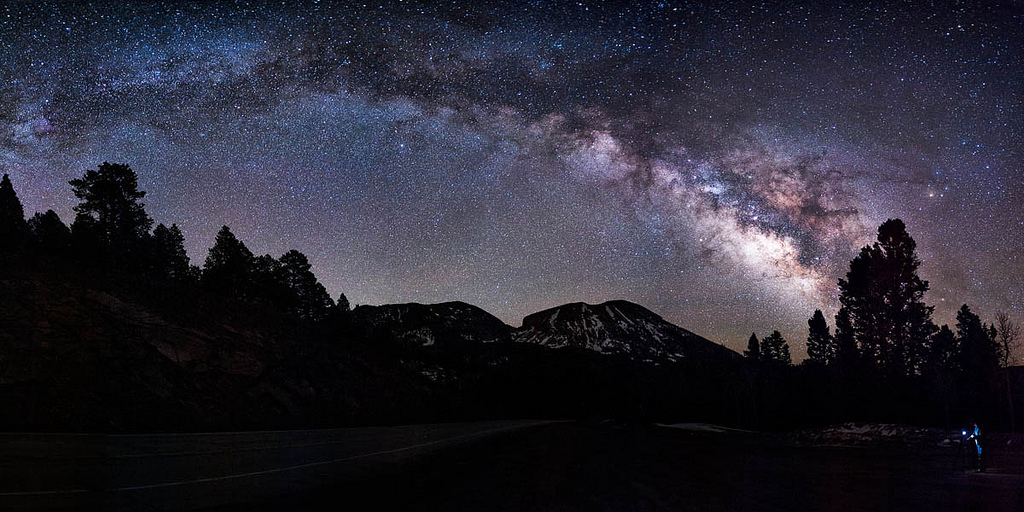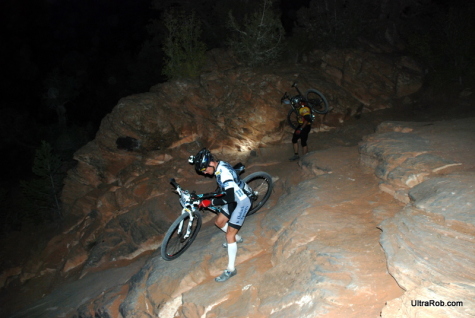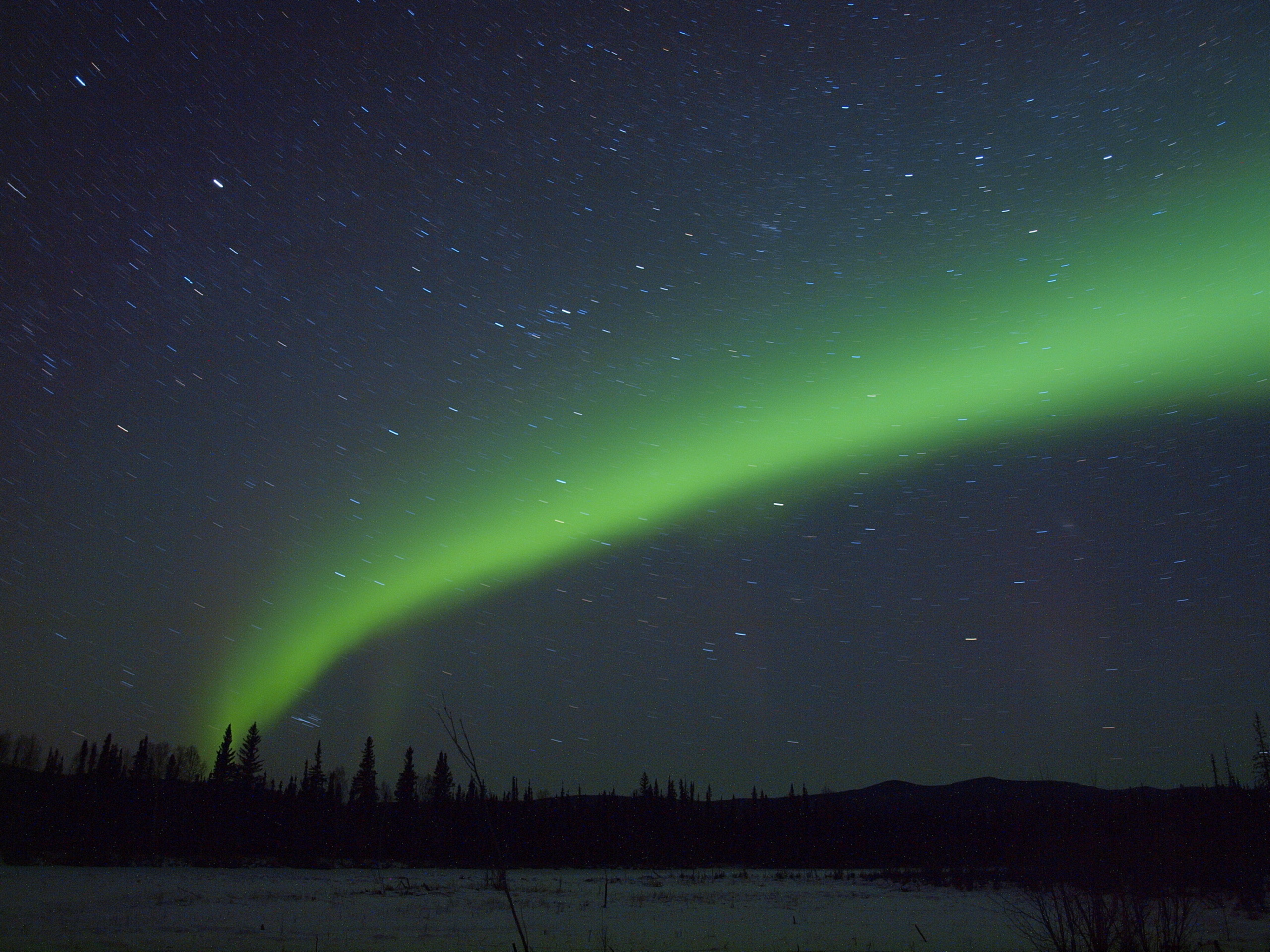
This post originally ran on November 11, 2014.
It’s 6 am on an early November morning, and I am tiptoeing up a juniper hillside with a rifle slung over my shoulder. I’m following Adam, my friend and guide, when suddenly he stops. “Listen.”
It’s still completely dark, except for the sea of stars above us, which I gaze up at as I stop and listen to the elk, my mind focused on pinpointing its whereabouts. He’s just west of us, and now we’re sneaking through the darkness toward his call.
If you’re a regular LWON reader, you already know how this story ends, and you also know how my three outings earlier this month fanned my passion for elk hunting. As I tried to explain my new obsession to a friend, I realized that one of the most enjoyable parts of elk hunting was the time I spent outdoors in the dark.
Something magic happens in the woods when the sun goes down. Without sight as a guide, the other senses become more vivid, in the way that I imagine a blind person must become more attuned to sound or touch. The sounds of a forest contain so much information, but these signals can become drowned out among the textures of sight. Tracking elk without vision for reference, I became hyper-aware of the auditory cues all around me. As I focused on locating elk calls, I also noticed an owl hooting in a nearby tree and the sound of a racoon, scurrying through the brush.
I’d never really thought about it before, but some of my fondest memories in the outdoors have happened in the dark. Like the time that, after almost two weeks of watchful waiting, I finally witnessed the Northern Lights on an early November morning in Fairbanks, Alaska.
Then there was the enchanting night I spent pacing my friend Greg through Utah’s Wasatch wilderness as he attempted to finish one of the world’s most ridiculous foot races. As I wrote in Runner’s World,
We’re in the thick of the night now, and the Universe has collapsed down to the space illuminated by our headlamps.
The mountains harbor a sort of magic at night, not a Where the Wild Things Are dreamscape, but a quiet sereneness. Nothing exists but the sound of our footsteps, our breathing, and the coyotes that are now howling, songlike, nearby as if to welcome us to their secret nighttime world.
Nor can I forget that wondrous winter slumber party when I stayed up half the night with a friend, standing on her dirt driveway, looking up at the milky way, and pondering our place in the universe.
The most amazing ski outing of my life took place on a spring night at the Grand Mesa. A full moon shimmered on the snow, and the snowpack had melted and then frozen into a hard crust that turned it into a speed track. My companions and I skated out to a steep arroyo where we could start on the top of one slope, point our skis straight down into the gully and then shoot up the other side, in a thrillingly fast swoop, the cool air in our faces and the stars overhead. The moonlight cast a blue glow over the endless snow, and night air had a calm stillness that made our runs feel especially fast.
 Finally, there was the night I spent riding my mountain bike through the desert. Somehow, I’d convinced three friends to join me as a team in the 24-Hours of Moab mountain bike race, and it so happened that most of my laps of the 15 mile course took place in the dark. Mountain biking at night might seem like a stupid thing to do, especially through technical obstacles like the Nose Dive and the Ledge, but I found it surprisingly rewarding. The thing about navigating through darkness is that it focuses the mind. Make a mistake, and it’s your skin on the line. With the stakes thus raised, the senses sharpen in a way that they rarely do during daytime hours.
Finally, there was the night I spent riding my mountain bike through the desert. Somehow, I’d convinced three friends to join me as a team in the 24-Hours of Moab mountain bike race, and it so happened that most of my laps of the 15 mile course took place in the dark. Mountain biking at night might seem like a stupid thing to do, especially through technical obstacles like the Nose Dive and the Ledge, but I found it surprisingly rewarding. The thing about navigating through darkness is that it focuses the mind. Make a mistake, and it’s your skin on the line. With the stakes thus raised, the senses sharpen in a way that they rarely do during daytime hours.
This heightened awareness feels good –it trains your senses to forgo everything but the here and now. When you’re outdoors after dark, there’s no better place to be.
Sounds: Elk bellowing and coyotes via SoundBible.
Photos: La Veda Pass at night by David Kingham via Flickr. Fairbanks aurora by Young Juan via Flickr. 24 Hour of Moab cyclists on the Nose Dive at night by Rob Lucas via Flickr.
